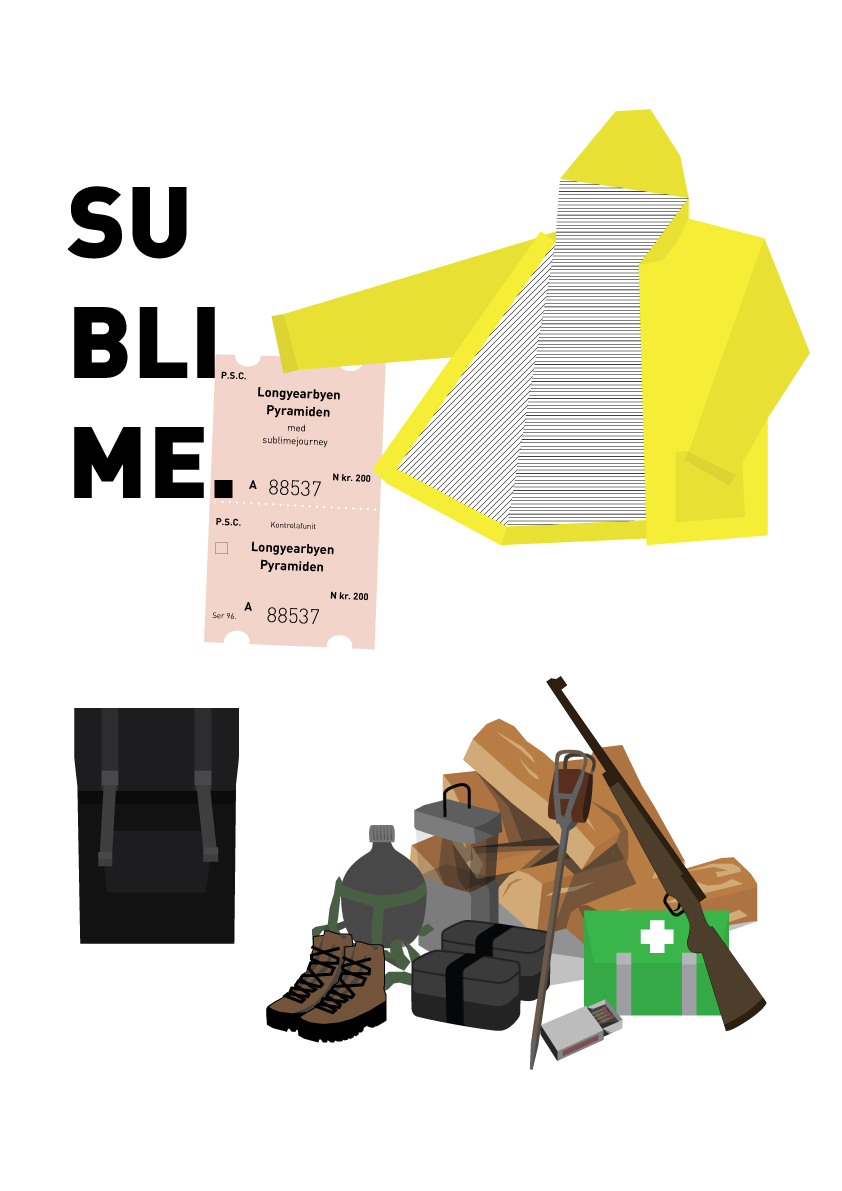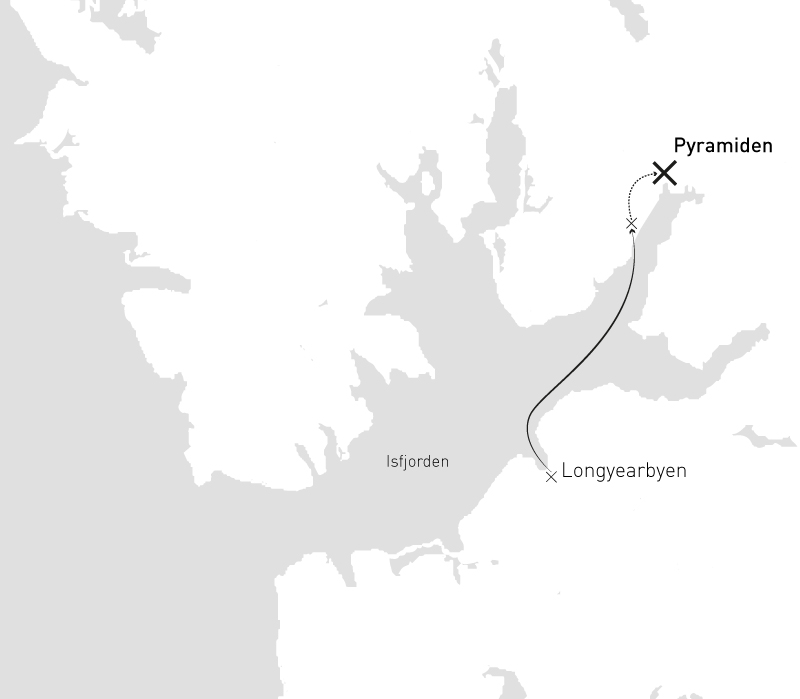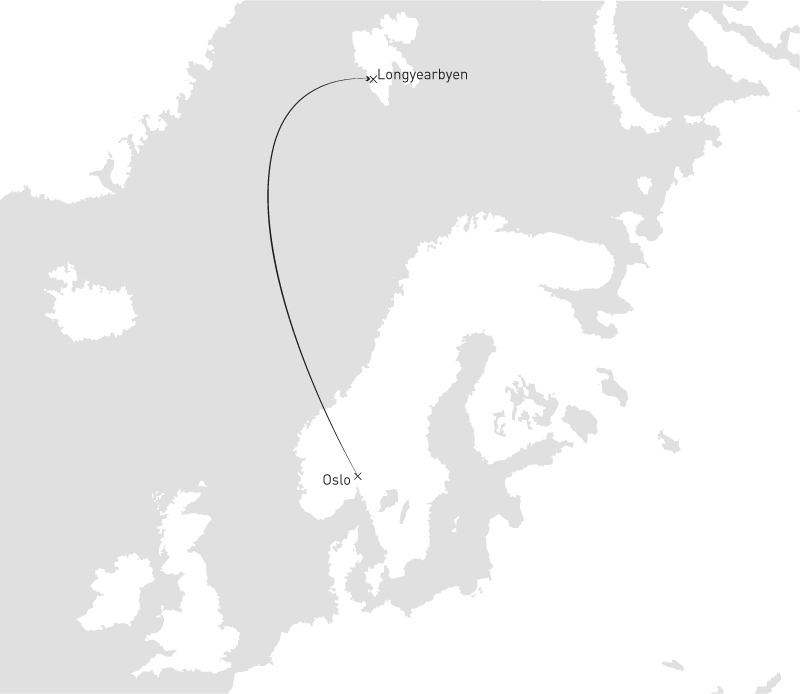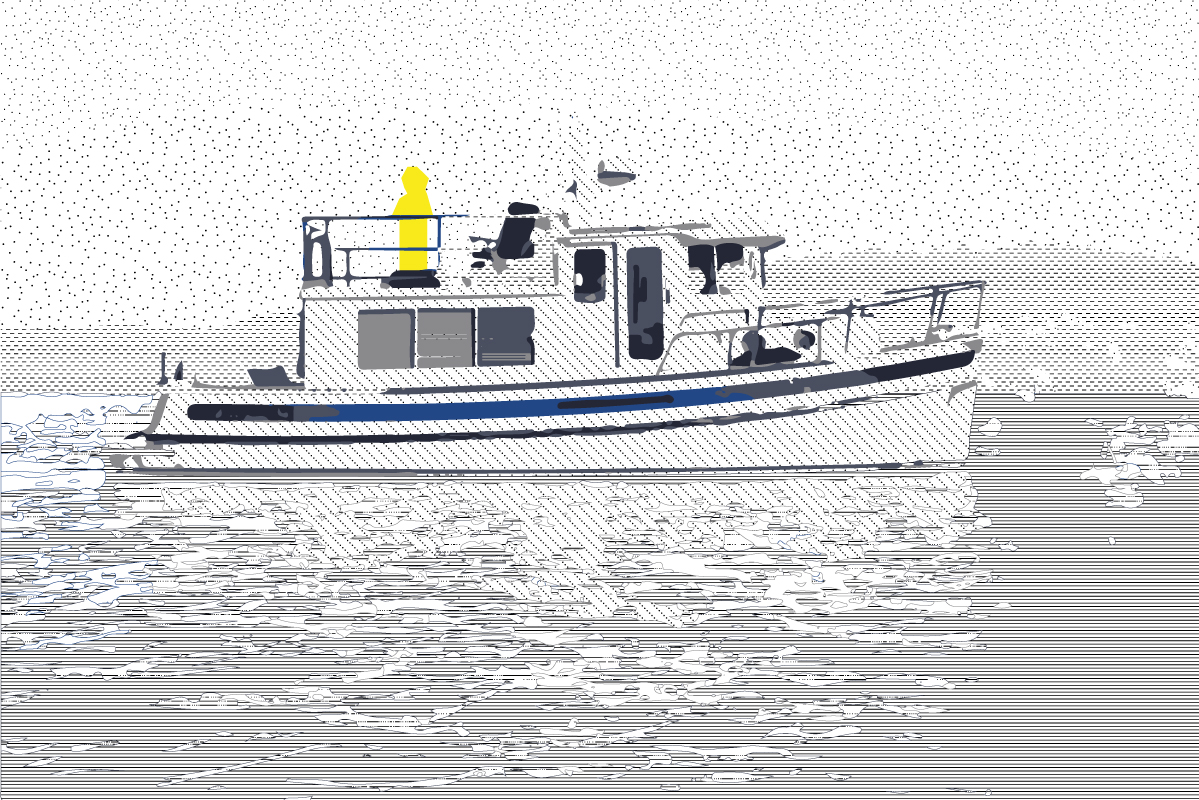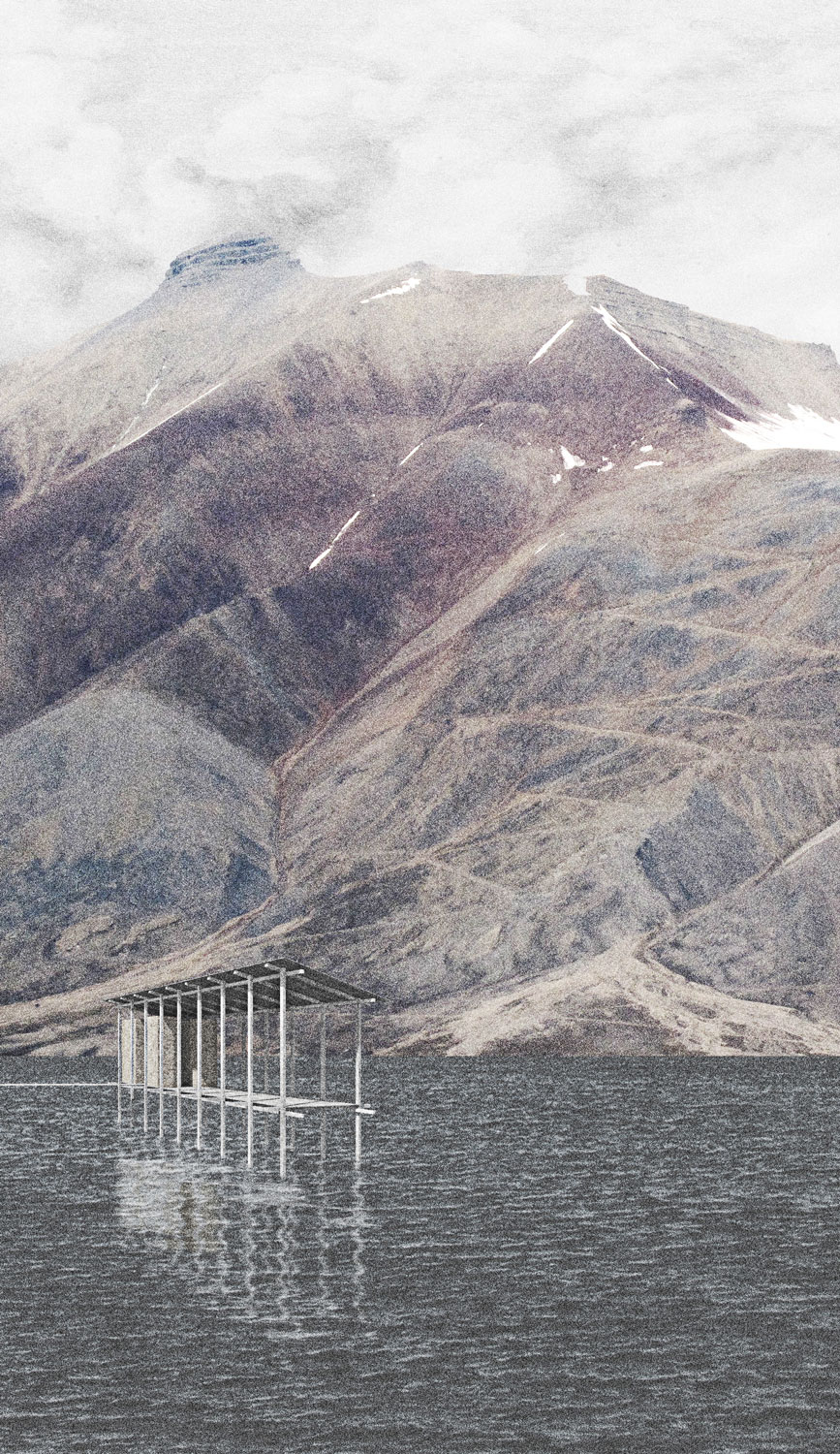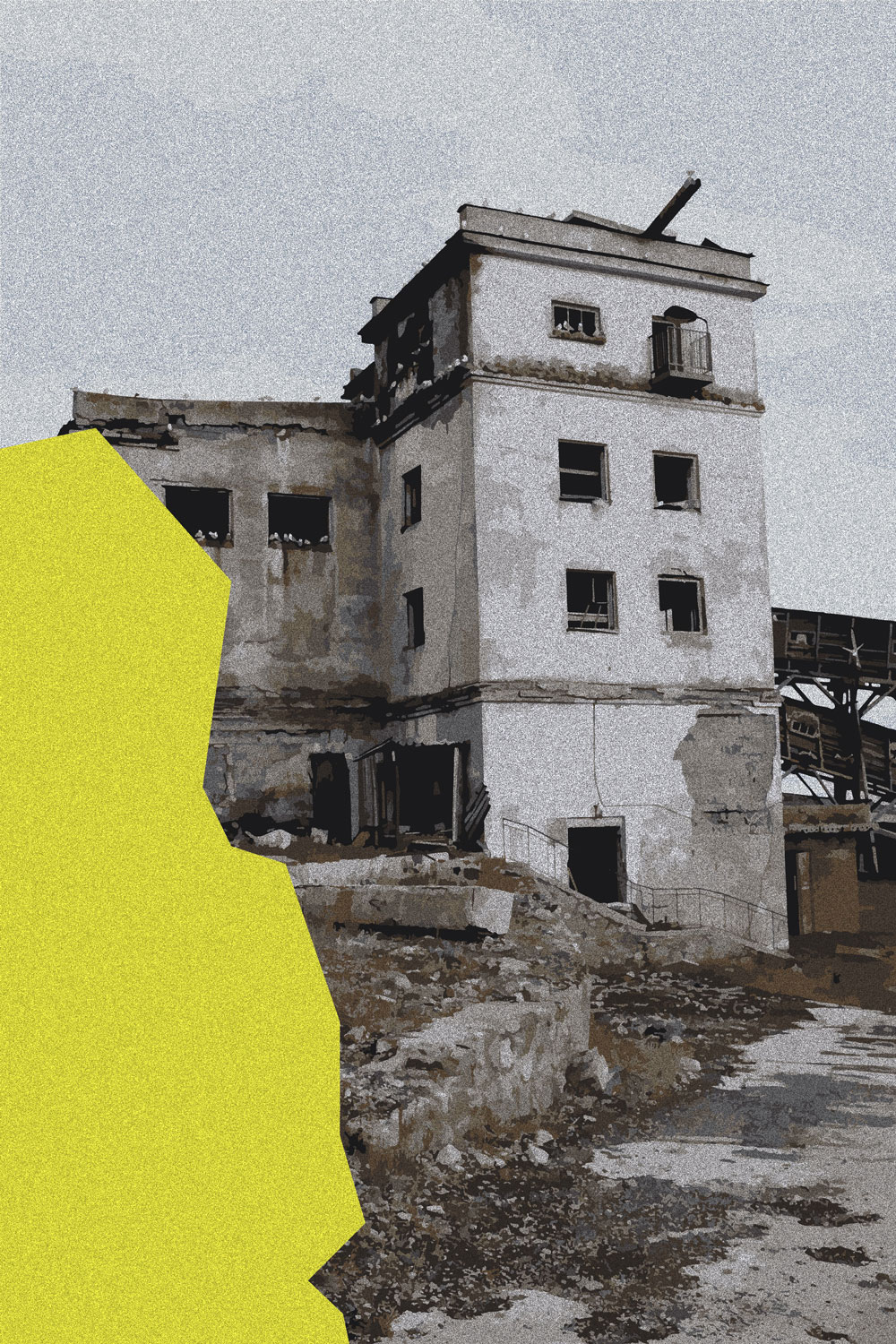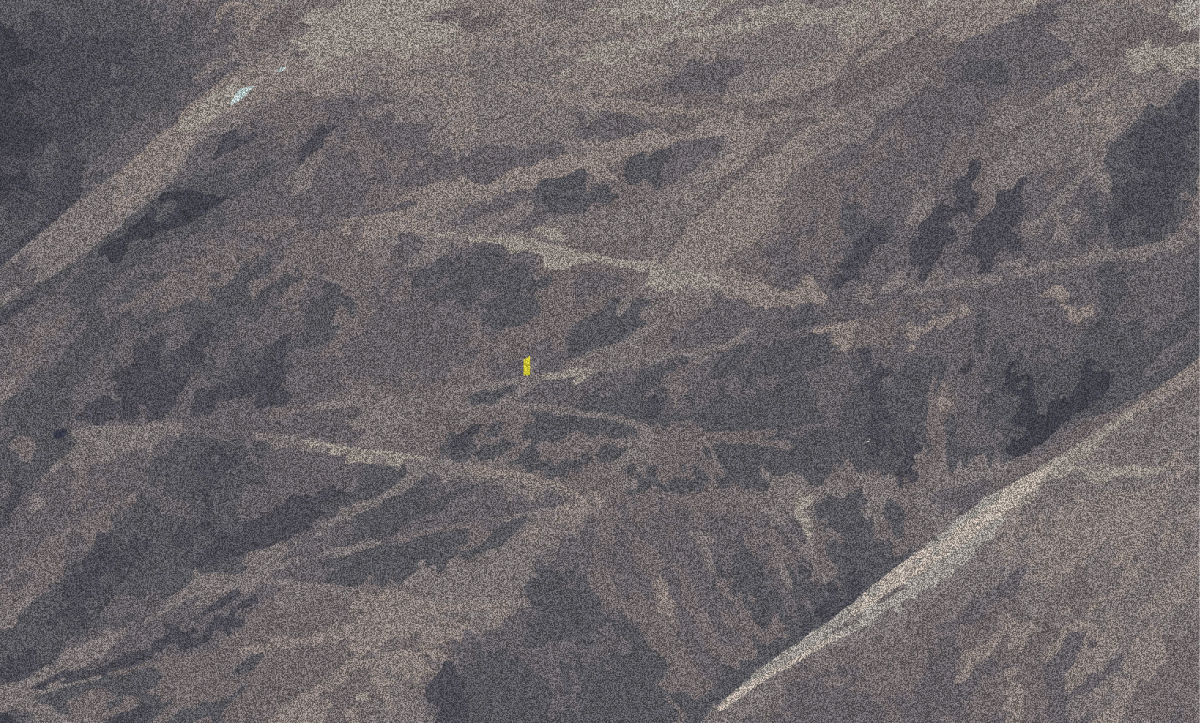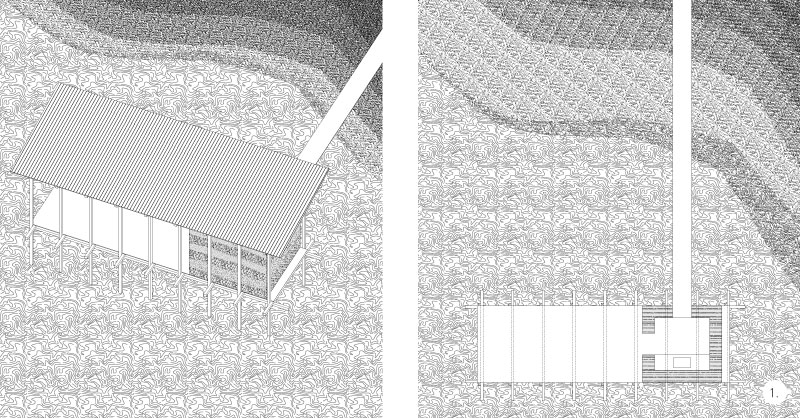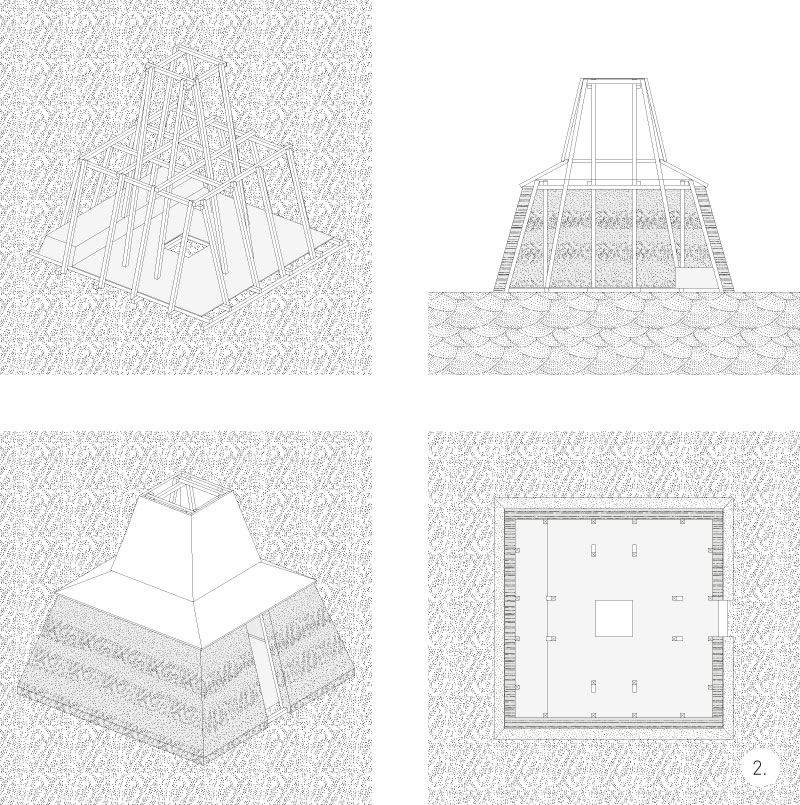☉ A journey in Pyramiden is a proposal by RUINS for 120 hours in 2015. It is located in Pyramiden Norway in a mountain setting. Its scale is extrasmall. Review the 2 proposals for the same competition.
For many years, the archipelago of Svalbard and so Pyramiden were considered as promise land for pioners. Today it’s a totally another story though, both are on the verge of being forgotten. Indeed, on the first hand, the human interest moved towards other kind of fascination and on the second hand it’s also caused by climatic deterioration that goes on since decades.
What do we have to preserve and how? Which memory inherited from the past do we have to transmit to future generations?
Because of its location, this archipelago recalls a fantasy around the idea of traveling. Moreover, the landscape, is made of such typical mountains that lead to name the place Pyramiden. Furthermore, the city inherits from a communist culture which has defined a very particular architecture. Mining has also left tangible traces in the landscape through several artefacts. Regarding that context, what sense does the concept of preservation have to take?
Preservation
[Noun]: The action of preserving something. The state of being preserved, especially to a specified degree.
Through the action of preservation, the human being tries either to keep a property (or its representation) he needs or to prevent the process of forgetting. In philosophy the concept of forgetfulness is intrinsically linked to the memory and so to the idea of preservation. Nevertheless, this paradigm is changing from one school of thoughts to another.
In his Phaedrus, Plato leads Socrates to say that the writing “will produce forgetfulness in the minds of those who learn to use it, because they will not practice their memory. Their trust in writing, produced by external characters which are no part of themselves, will discourage the use of their own memory within them. You have invented an elixir not of memory, but of reminding; and you offer your pupils the appearance of wisdom, not true wisdom, for they will read many things without instruction and will therefore seem to know many things, when they are for the most part ignorant and hard to get along with, since they are not wise, but only appear wise”. Plato, Phaedrus, 275a.
Some years later Nietzsche had said, against Plato’s theory of reminiscence, that forgetting is even a condition sine qua non of happiness: forget is to release the past, be able to act. Then according to Nietzsche, a nostalgic consciousness is paralyzing.
Pyramiden have an intense history. That’s why we have to reflect on the heaviness of its memory within the Norwegian and Nordic culture. How can we make sure that such place will last forever (physically and/or mentally)? Then the question of the preservation of artefacts, symbol of the pioneer who always extend further boundaries, makes sense. In that context, we ought to include the landscape in the thinking process: what kind of landscape do we have to preserve?
This landscape fantasy comes down through centuries from the first romantic paintings until a more contemporary philosophic thinking in which Augustin Berque and Alain Roger are involved.
According to Alain Roger the concept of landscape is strongly forged by the sight, constantly aesthetic and cultural, we have on nature. He suggest to work on the articulation between the concept of Land (pays) and Landscape (paysage). The land represents the degree-zero of the landscape. This is the “artialisation” of the nature (the act of turning nature into art) that enables the transition from land to landscape. This modification can be done either with a direct or an indirect action. The human need to create gardens had been the first will to control nature, to turn it into a piece of art where its attributes, defined and concentrated, would reach the perfect quintessence of beauty.
In the meantime, Berque suggests a different definition of the landscape. He assumes that the landscape can be both natural (geographic) and figurative (artistic). This ambivalence also defines what Berque calls “trajective”: the planning of the environment depends of its interpretation. In the other way, the planning of the environment influences on its interpretation. The “trajective” is an operational spiral of actions between environment and interpretation. Finally, the action of our subjectivity on the real environment and on the objectivity of things within it can be understand as a form of mediation, which is both physical and phenomenal.
The value of the value
Speaking of the preservation of Pyramiden leads us to deal with various concepts: alteration, destruction, forgetting and in-situ experiences. However, how can we maintain a strong position regarding those questions? How can we define the location and the components which are affected by those effects? We ought to establish a strategy regarding to cognitive values. Along with we have to choose a temporality for such a project.
If we read the landscape in the « ecoumenal » point of view (Berque), the landscape is defining both a real location (Aristotelian topos) and an existential location (Platonistic chora). In that case, we no longer have to think of a material, a monumental or a memorial project. Then we decline all of the potential signs which would suggest an abstraction of a reality. The architecture becomes a simple facility serving the experience of the sublime. As Nicolas Bourriaud would said, we need to be “radicant”.
Being a radicant is to display, to activate, his own roots in heterogeneous contexts; to decline the virtue that they completely define our identity, to translate ideas, to transcribe pictures, to transplant behavior, to exchange rather than to impose
Buildings already here are physical traces of quantitative landscape design which is gone. We need to consider the landscape as a resource we can work with. So it means that we don’t need to display them as symbols of a pomp vanished past. We can just be conscious of their existence as a precise period within the history of Pyramiden and leave them slowly fade away. Therefore we definitely won’t touch those buildings.
How can we build that link which would exist between the place and the visitor who looks to experience the memory of the location? This project wants to realize and emphasize that connection through and individual and private experience of the land and the landscape (as Roger speak of it). A voluntary action in which we temporary forget our social construction. In that way, Pyramiden is a full experience which find its preservation precisely in the memory of this experience.
Pyramiden, an introspection
The project is the development of the necessities to make possible this journey to Pyramiden. It’s composed of heterogeneous non-referential elements with different scales. The toolbox and the architectural systems enable the experience of the memory without any boundaries. Then, probably in a year or in ten years, the poncho will be orange, the shapes of the dock and the cabin will be different as long as they fulfill their functions.
Toolbox
It contains everything needed to spend to day and a night on the island.
– A poncho
– A suit
– Shoes
– A bag pack
– A first aid kit
– A flask
– A lamp
– A walking stick
– Food
– A rifle
– A match box
– Logs
The dock
It’s the first contact with Pyramiden. It’s placed far from the cabin. In that way, the visitor, straightly has to put himself in the expedition condition. Before to put the first step on the island, the visitor has to suit up. He needs to set all of his social markers in a box and use the other one to get ready to those two days. Afterwards he will be in the best condition for that tremendous experience.
The cabin
Here again, it’s more a question of a function than of a shape. Thus the form is a non-referential one and embrace a kind of archaism. The visitor can make a fire and reflect peacefully on the experience he came for.
Finally the aim of the project is to extract from an archaism the loss of the society for the benefit of the visitor and its sensibility. The volunteers are lead individually by boat to the dock for two days and a night. They have to leave their belongings in a trunk but they can use the travelling equipment in the other trunk: a poncho, a walking stick, some food and water…
Everyone is free to start his exploration as wanted, a curious exploration of the old ruined buildings, a contemplation of the stunning environment, a climbing of the mountains…. After his night in the shelter, the visitor has to return to the dock by the end of the second day. From that point he will recover his belongings and would bring back nothing but sensations he has felt and which are now deeply buried into him.
